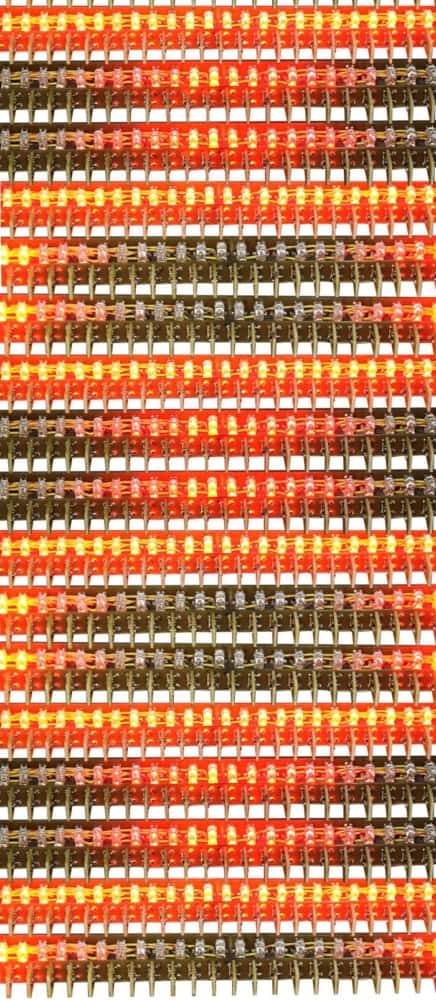
An international team of researchers has created the first metamaterial where its properties can be controlled with light. The material – made of metallic resonators with electronic circuits incorporating photodiodes – might find use in radar and communications applications, say the researchers.
Metamaterials, which were first made around 10 years ago, are artificial sub-wavelength patterned structures containing arrays of tiny elements such as rods and rings that respond to light and other electromagnetic waves in unusual ways. For example, a metamaterial can be designed to have a negative refractive index so that it bends light in the opposite direction to normal materials. Such a unique property means that metamaterials have already been used to make “superlenses” that are able to focus light to a point smaller than its wavelength, allowing optical microscopes to view much smaller objects than is possible today. They can also be used to make “invisibility cloaks” for electromagnetic waves.
Light sensitive
Up to now, however, most metamaterials had fixed architectures and their properties could not be tuned across the structure. A team led by Ilya Shadrivov and Yuri Kivshar, from the Australian National University and the University of Information Technologies, Mechanics and Optics in Russia, has now come up with a new idea that overcomes this problem. The researchers decided to build a metamaterial lattice not just with simple metal tracks as in previous experiments, but one that contains electronic circuits incorporating light-sensitive photodiodes.
“The voltage generated by this photodiode when it is illuminated with light can be used to change the resonance of the metamaterial structure,” explains Shadrivov. “This means that we can control the refractive properties of the structure at will and bend the microwave light beams passing through the material in whichever direction we like.”
Illuminated array
The metamaterials used in this study were made in much the same way as a conventional printed circuit board with a lattice of engineered copper tracks. In this case, the tracks comprise 24 so-called broadside-coupled split-ring resonators (SRRs) placed in front of a metallic screen. The components in this structure interact with microwaves like ordinary glass atoms in a lens interact with light. The SRR itself is made of two broken copper rings placed on the opposite sides of 1.6 mm printed circuit board. The inner radius of the SRR is 3.25 mm, the width of the metal strip is 0.5 mm, the copper thickness is 30 μm and the gap between them is 1 mm. Each ring has an extra gap of 0.4 mm in which an electronic circuit with photodiodes is placed. These diodes generate a voltage that increases as the intensity of the incoming light increases.
“Our set-up also allows us to change the properties of the metamaterial non-uniformly by illuminating the array with light beams of varying intensities,” says Shadrivov. “This concept of being able to tune a metamaterial’s optical properties could potentially be used to make reconfigurable satellite dishes or reflectors for antennas that can operate at different light wavelengths,” he told physicsworld.com. “We could change the properties of such a dish (for example its focal length or reflectivity) without changing its physical shape in any way and could, for instance, create a satellite dish that is not a dish at all but a flat disc.”
Such structures might also be designed to become strong absorbers of light or they could be used to make the first invisibility cloaks that are fully reconfigurable. “These devices might find use in both military and civilian applications,” he adds.
The research is published in Physical Review Letters.




